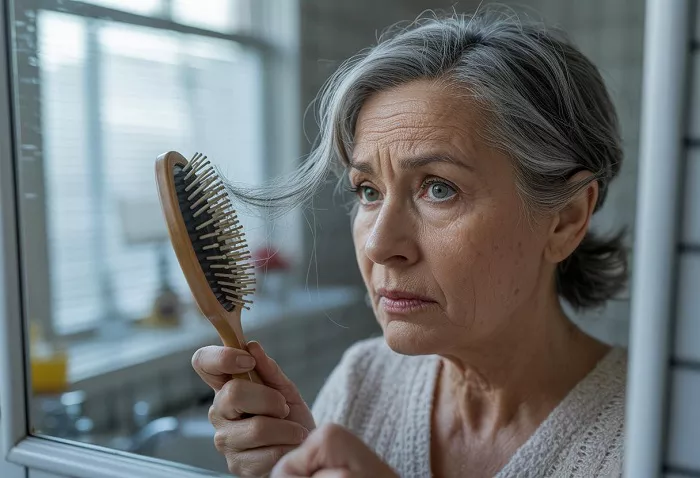A growing number of women over 60 are facing an unexpected culprit behind their hair loss: common nightly styling routines. Dermatologists report that traction alopecia—a form of hair loss caused by repeated pulling—is becoming widespread among older women who maintain tight hairstyles without adapting to the changing needs of aging hair.
The Hidden Risks of Tight Hairstyles
Tight ponytails, buns, and slicked-back styles, often seen as reliable go-to looks, may be inflicting irreversible damage on hair follicles. “Many women are unaware that their favorite hairstyles are causing receding hairlines and bald patches,” explains Dr. Laura Jameson, a hair loss specialist at Northwestern Memorial Hospital. Over time, the constant tension weakens follicles, and while younger hair may bounce back, follicles after 60 lose much of their resilience.
Why Aging Hair Requires Gentler Care
Hair follicles undergo decades of hormonal changes, especially during menopause when estrogen levels drop. This natural shift leads to thinner, more fragile hair that grows back more slowly. When combined with harsh styling habits, it accelerates hair thinning and patchy baldness. Real-world examples—such as a 70-year-old woman who saw improvements after switching to gentler hair care—highlight the importance of adapting routines for aging hair.
Signs Your Styling Habits Are Harming Your Hair
Experts advise watching for warning signs that indicate damage, including small bumps or redness along the hairline, increased hair shedding after removing hair ties, scalp tenderness, and visible thinning around the temples or crown.
Hair Health Advice: Adapting Hairstyles for Preservation
Celebrity hairstylist Veronica Chang emphasizes that switching to looser hairstyles is not a sign of defeat but a strategic move to preserve hair health. Avoiding styles that strain fragile hair can also help maintain a more youthful appearance.
Nutrition and Hair Health Tips
Proper nourishment plays a vital role in supporting hair follicle health. Research from Harvard highlights compounds in green tea that may benefit aging hair, underscoring how internal nutrition complements external care.
Recovery Options for Damaged Hair
For those already experiencing hair loss, several treatments offer hope, including FDA-approved topical minoxidil, scalp massages to boost circulation, platelet-rich plasma therapy, and low-level laser treatments.
A Holistic Approach to Hair Health After 60
Experts agree that treating hair like a delicate garden rather than a construction project leads to better long-term outcomes. Embracing gentler beauty routines respects the natural aging process and enhances overall hair health.
Listening to Your Hair’s Needs
Ultimately, hair health reflects broader well-being. By following hair health advice tailored to aging follicles and adopting gentle styling habits, women can support their hair’s vitality well into their golden years, honoring both their appearance and life journey.
Related Topics:
- Laser by Aleya Sees Growing Demand for Inclusive Hair Removal as Cultural Perspectives Evolve
- Essential Oils and Hair Growth: Separating Fact from Fiction
- Vitamin D & Men’s Hair Loss: Exploring the Link


